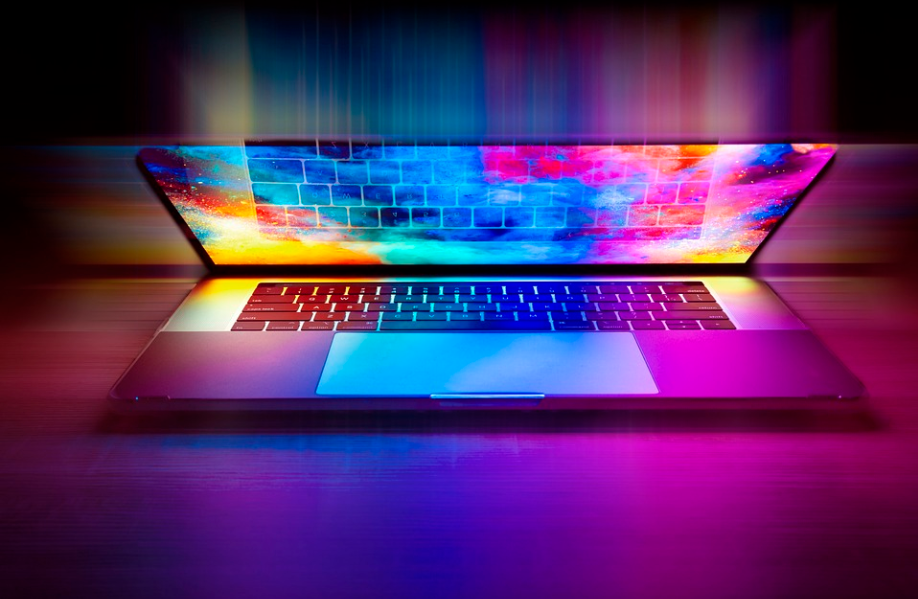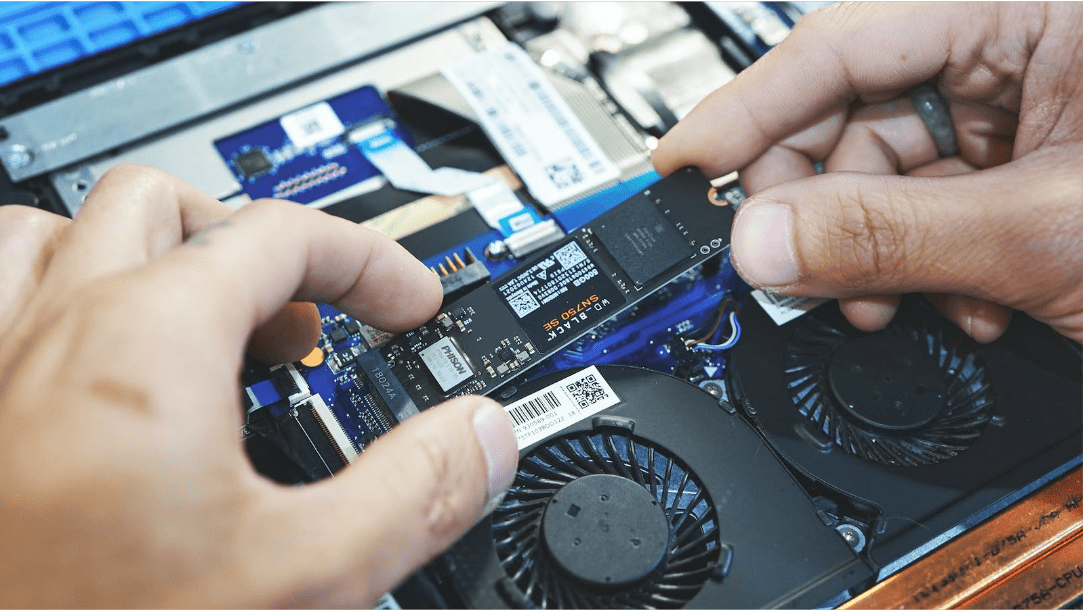The slow performance of the reader’s current laptop prompted him to reach out to us for recommendations on a replacement device.
When he originally got it, he stated it was great, but when he installed several programs, it became slow.
He said it took three to five minutes to run Notepad, despite having an Intel i3 processor, eight gigabytes of random-access memory, and a terabyte of hard disc space.
Our technical support team spent 17 hours investigating the causes of a Windows laptop’s slowdown and found a few common culprits.
Notepad, Windows search, and even resource-heavy web browsers like Google Chrome now launch in only 1-2 seconds thanks to the optimizations they discovered and implemented.
The idea that newer computers are quicker is a common misconception. The parts and the trash it collects are what holds the whole thing together.
Even if you format your hard disc to get rid of the unused program and reinstall the ones you need, it might still go sluggish again in the future. Is it?
Table of Contents
How to Speed Up a Windows Laptop? 12 Easy Steps
Most procedures are straightforward and may be finished in 30–40 minutes.

P.C: PIXABAY
The formatting of a PC, the installation of an SSD, or an increase in system memory may increase the performance of a Windows laptop by 40-60%. (16GB RAM is plenty).
1. Disable Real-time Security
Windows Defender in Windows 10 may do real-time scans of your hard drive thanks to the operating system’s new real-time scanning features.
On the other hand, the disc’s speed is slowly being eaten away by the endless scanning.
In contrast to utilizing a solid-state drive (SSD), which eliminates delay, using a hard disc drive (HDD) will cause the task manager to consistently report a disc utilization of 90-100%.
What’s the use in trying to protect something that can’t even do the bare minimum? Use Norton, McAfee, or Kaspersky antivirus software with continuous scanning deactivated.
2. Virtual Memory Companion for Windows
Would the system slow down if you replaced the RAM with an SSD but kept the same amount of storage space?
That’s right, if your memory (RAM) is limited, you won’t be able to run as many programs at once as you’d want.
Windows OS provides the means to create a virtual memory space to circumvent this problem (paging file).
Despite the fact that a 7200 RPM HDD is slower than RAM or SSD, it is nonetheless used to offload unused programs in order to make room in RAM for more resource-intensive tasks.
3. Managing Windows’ Performance Issues
Perform the troubleshooting approach first before continuing on to any other option. There is a function in Windows that may detect performance issues.
The method may detect numerous active files or files that slow down the system. And with only one click, it’s fixed. Follow these steps to diagnose and fix any issues:
- To access the Settings menu, choose the Start menu.
- Select “Troubleshooter” from the “Troubleshooting” menu.
- Please go to System and Security, and then click on Performance Issues.
4. Files to Delete
Keeping your system in tip-top shape may be practiced in part by clearing out unnecessary files.
The Windows operating system contains a tool called Disk Cleanup that enables you to automatically eliminate junk files and unused caches.
MacBook users may be looking for a similar function in Apple’s operating system, Mac OS. Also, Windows has a defragmentation option, which you may enable.
To help you organize your data and get rid of unnecessary files, it performs defragmentation of your hard disc.
Above all else, you may go through your video, music, paper, picture, and other collections and remove everything that isn’t absolutely essential.
However, clearing up you recycle container might make a difference. You can accomplish the same thing on a Mac, however, an SSD disc is unnecessary for the OS.
5. A Memory Boost
Increasing the computer’s memory could seem like overkill. The opposite, however, is often true. When using intensive software, even with 4–6 GB of RAM, performance will suffer.
Large benefits in the short term are possible. You need to visit an online retailer and hunt for the top RAM modules available. To put it simply, it won’t break the bank, but it also won’t be free.
Find out whether your laptop’s RAM can be updated online before you begin hunting for one. RAM upgrades are not possible on the Surface Pro, the latest MacBooks, and many other compact ultrabooks.
The more RAM you have, the bigger your system will be. In turn, this will increase the performance of the laptop, since the programs will have more space to run in.
6. Using Solid-State Drives
You probably already know that Solid State Drive (SSD) is a speedier alternative to Hard Disk Drive (HDD). Due to the lack of any moving parts, it will last far longer than traditional hard drives.
Compared to traditional hard disc components, the cost of an SSD may be higher. And yet, the overall cost has dropped much more slowly than anticipated, allowing you to afford it for your laptop.

P.C: PEXELS
Since every Mac comes included with a lightning-fast solid-state drive, more capacity may not be an issue. The current MacBook Pro’s SSD may be upgraded to a whopping 4 terabytes.
Because of the technical nature of adding new hardware to the system, it is recommended that you seek the assistance of a specialist.
7. Anti-Virus/Malware Check
The existence of a virus or other malware might be one of the many causes of your computer’s slow performance.
You may use Windows Defender or any other third-party antivirus program you have installed on your computer.
In most cases, checking the system before beginning to work is the best course of action. Antivirus programs like Norton, McAfee, Kaspersky, Avast Antivirus, Bitdefender, etc.
You may get the newest version of the application for free if it is working correctly after you download it.
8. Restriction on Mobile App Launches
Do you notice a slowdown in performance when initially starting up, but afterward everything runs smoothly? If you have this issue, turning off auto-start programs is the solution.
No matter the OS, some programs always launch first. Concerns about this are heightened whenever there is a slowdown in the system.
You may reduce the number of programs that straightforwardly run at boot time. Launch Task Manager in Windows 10 and click on the Startup tab to see the current startup processes.
You may be unfamiliar with a few of the applications. Just get rid of any extraneous material. A similar strategy is effective on macOS.
To uninstall the programs, launch the Activity Monitor as before.
9. Erase unused software
You may also clean up your computer by removing unused software. This is not the same as getting rid of unnecessary files. The process included erasing any and all unused programs.
It’s possible that there are games installed on your PC that you’ve never even opened. You may also simply use Chrome or Opera and delete the others you downloaded for no reason.
This might affect any software on your device, whether it came preinstalled or you got it via the Play Store or the web.
Antivirus software might be a performance hit because of incompatibilities. Getting rid of it and replacing it with something else is the best option.
10. Turn off your computer more often
Consumers who rely on a personal computer or portable workstation for their livelihood are less likely to power off their devices regularly. Once someone has adjusted to the system, there is no turning back.
That is the crux of the problem. It continues to function even if the computer is turned off or the screen is blank. Your body has similar processing and rest requirements.
For this reason alone, turning off your machine once a week may allow you to see shifts more quickly.
When you install new software, your computer usually requests a restart to make sure everything is working properly. That information now reaching the public is long overdue.
11. Turn off Visual Effects
It’s possible that we’ll also reduce or eliminate the visual effects. Everyone would benefit from a somewhat more aesthetically pleasing system interface.
Therefore you may turn it down or off if you want. It obviously drains the battery quickly and makes the computer less efficient.
You have control over twenty different effects, such as glass that appears and disappears, menus that open and close, and even shadows. In order to lessen the Visual Effects, try this:
- To access the Settings menu, choose the Start menu.
- Type “Performance Information and Tools” into the search bar to find what you’re looking for.
- Next, select the Effects tab.
- If necessary, enter Admin.
- Select the most efficient setting under the Visual Effects menu.
- Now, OK.
13. Reformat your computer
Should all other strategies fail, this is what you can try. Both a fresh installation of the operating system and a complete reset to factory settings are available to you.
First, ensure the safety of your information by making a copy of it on an external hard drive. After formatting, all of your data will still be accessible and recoverable.
In this case, any flaws or viruses have been fixed, so it’s as good as new. Additionally, you should ensure that the machine’s operating system and all discs are up to date before restoring any data.
It’s true that it’s a time-consuming process, but it might be required if the issue has gone unchecked for too long.
Quick Links:
- Are Gaming Laptops Worth It? [Or a Waste of Money?]
- How To Fix Laptop Power Jack Without Soldering?
- How to Download Udemy Videos: Step-By-Step Guide
- How To Format Laptop? 5 Easy Methods
Conclusion: How to Speed Up a Windows Laptop?
These are just a few of the user-friendly techniques that can be implemented to speed up a computer or laptop. You can also try reducing the system’s visual effects in the settings.
If you are a frequent user and don’t mind the appearance, you can do this to improve system speed.
The basic line is that the more data and files you add to your system, the slower it becomes. This kind of long-term catastrophe requires adequate maintenance and attention.
You don’t want to spend money on RAM, SSD, or even reinstalling OS. Prevention is always better than cure.


![How To Manage Client Communication Effectively 2024? [5 Key Tips]](https://megablogging.org/wp-content/uploads/2022/11/Client-Communication-Management-211x150.png)
![How to Create a Lead Capture Landing Page in WordPress 2024? [Step-By-Step Guide]](https://megablogging.org/wp-content/uploads/2022/11/How-to-Create-a-Lead-Capture-Landing-Page-in-WordPress-211x150.png)
